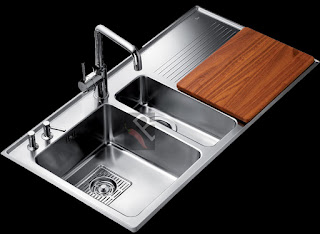What adhesive to use with mosaics for my bathroom
 |
| Mosaics for your bathroom or kitchen |
Installing mosaics, be it natural stone or glass mosaics, can be a daunting prospect, however, if you follow some basic rules it should not be a problem.
The first thing to consider is the adhesive with which the mosaics must be attached or glued to the wall or floor. Try and use WHITE quick set mosaic adhesive. The quicker it dries the less chance is there that the mosaic pieces will move and ruining the final design. Using white adhesive will also not affect the colour of either natural stone mosaics such as travertine and sandstone. Grey adhesive tends to percolate into the stone and render the colour slightly dull over time. Although this fact is highly contested by many builders, the only reason is that the white adhesive is more expensive. Some glass mosaics backing is not solid so a white background will ensure rich colours. Remember always to use bonding liquid when mixing the adhesive. This ensures good bonding and it also makes the adhesive water proof.
Applying the adhesive to the surface to be tiled is crucial. If the mosaic is glass and has a thin backing (i.e. you can see your finger if you press against the back) then the adhesive must be 'buttered' against the wall. If you use a natural stone or other solid mosaic such as porcelain, tiling tools can be used to spread the mosaic adhesive evenly.
The WHITE thin-set adhesive should first be applied ('buttered') to the surface to be tiled. With the flat side of trowel, using a scraping motion, work the adhesive into good contact with the surface to be covered. Then, a second time, go back with more setting material using the notched side of the trowel to achieve an even depth setting bed, and finally once more lightly work through with the flat side of the trowel to smooth out the linear notched grooves. Only apply as much adhesive as can be covered within 10-15 minutes, or while the adhesive surface is still wet and tacky.
To ensure adequate coverage and full contact to the tile it is recommended to lightly back 'butter' the tile. Back buttering is required for semi-transparent glass tile exceeding a 50x50mm dimension. Existing joints in subsurface must be carried through tile work. Expansion joints should be installed at all “changes of plane” in the tile work and where tile abuts restraining surfaces, therefore silicone caulking sealant must be installed in all corner joints in the place of grout. Remove facing sheet only when adhesive is fully cured/hardened. DO NOT remove the facing sheet when adhesive is still wet or before it is FULLY set. Removing the facing sheet will cause the glass to either move or become unstuck and will be removed with the facing sheet. Ensure facing sheet is removed gently from mosaic tile surface before grouting. To ease removal,cut into strips along the grout lines. The facing sheet must be pulled parallel to the installed tiles and not diagonally.
Grout joints should be packed full and free of all voids and pits. Excess grout should be cleaned from the surface as the work progresses, while grout is fresh and before it hardens. Prior to
grouting, test an area to make sure the surface does not scratch during grouting. It is recommended to use a latex modified grout (grout with bonding liquid) from the manufacturer for increased performance. No acids should be used for cleaning grout haze. Due to the impervious quality of glass, the grout will take longer to begin setting up. Use a damp sponge only for the final clean washing and smoothing of the grout joints. Use only epoxy-based grout for submerged conditions (ie. Swimming pools, spa’s, etc.).



Comments
Post a Comment